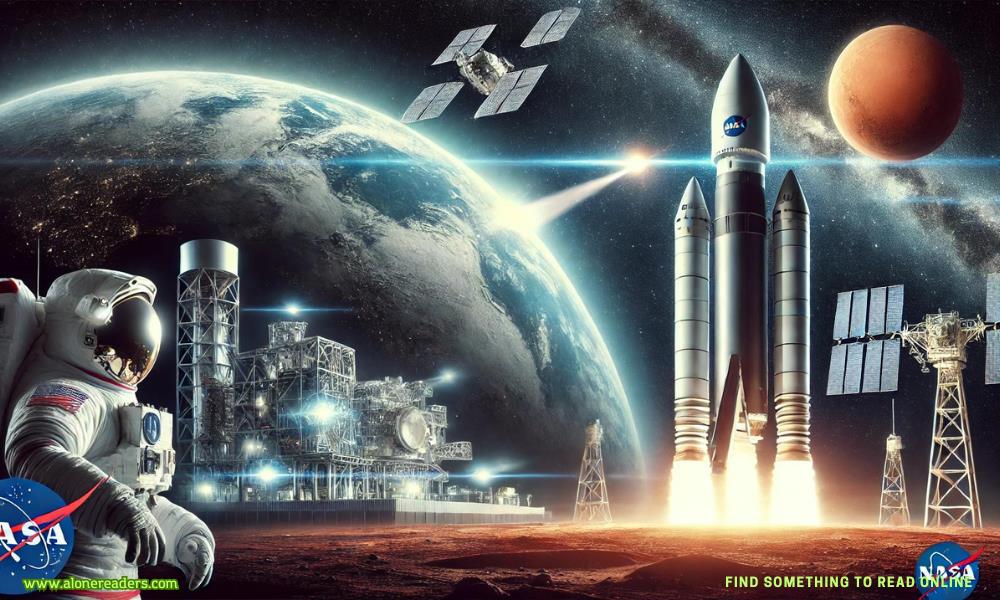
Washington, D.C. – The United States is set to embark on an ambitious new chapter in space exploration as NASA unveils its comprehensive plans for future missions to the Moon and Mars. These initiatives signal a renewed commitment to space exploration, marking the beginning of what could be a transformative era for humanity's journey beyond Earth. The announcement was made at a press conference held at NASA Headquarters, where key officials detailed the goals, timelines, and the groundbreaking technologies that will drive these missions forward.
At the heart of NASA's new space exploration initiatives is the Artemis program, an ambitious effort to return humans to the Moon by 2025 and establish a sustainable human presence on the lunar surface by the end of the decade. The program, named after the Greek goddess of the Moon, aims not only to send astronauts back to the lunar surface for the first time since 1972 but also to build the infrastructure necessary for long-term exploration.
"Artemis is our path to a sustainable future on the Moon," said NASA Administrator Bill Nelson. "This program is not just about landing humans on the Moon; it's about creating the foundation for future missions to Mars and beyond."
The Artemis program will include a series of increasingly complex missions, beginning with Artemis I, an uncrewed test flight scheduled for later this year. Artemis II will follow with a crewed mission that will orbit the Moon, setting the stage for Artemis III, which will land the first woman and the next man on the lunar surface.
In addition to crewed missions, Artemis will also focus on the development of the Lunar Gateway, a space station that will orbit the Moon and serve as a staging point for lunar operations and future missions to Mars. The Gateway will provide astronauts with a base for scientific research, technology testing, and as a waypoint for deep space missions.
While the Artemis program is focused on the Moon, NASA's long-term vision is set firmly on Mars. The space agency outlined its roadmap for sending humans to the Red Planet, with a goal of landing astronauts on Mars by the late 2030s. This bold initiative builds on decades of robotic exploration and scientific research, which have provided invaluable data about Mars' surface, atmosphere, and potential for human habitation.
"Mars is the next giant leap for humanity," said Kathy Lueders, NASA's Associate Administrator for Human Exploration and Operations. "Our missions to Mars will pave the way for future exploration, enabling us to live and work on another planet."
NASA's Mars missions will build on the technologies and lessons learned from the Artemis program. Key components of the Mars exploration strategy include the development of advanced propulsion systems, life support technologies, and habitat modules that can sustain human life for extended periods in the harsh Martian environment.
One of the most critical technologies under development is the Space Launch System (SLS), NASA's next-generation heavy-lift rocket that will be capable of carrying astronauts and cargo to deep space destinations. The SLS, combined with the Orion spacecraft, will be integral to both lunar and Martian missions, providing the power and capability needed for these historic endeavors.
NASA's ambitious plans for the Moon and Mars are not being pursued in isolation. The space agency is actively seeking international collaboration and partnerships with private industry to achieve its goals. Countries including Canada, Japan, and the European Space Agency (ESA) are contributing to the Artemis program, bringing expertise, technology, and resources to the table.
"Space exploration is a global endeavor," emphasized Nelson. "We are building a coalition of nations and commercial partners to explore the Moon, Mars, and beyond."
Private companies such as SpaceX, Blue Origin, and Lockheed Martin are playing a pivotal role in the Artemis program and future Mars missions. SpaceX, in particular, is developing the Starship spacecraft, which is designed to transport large numbers of astronauts and cargo to the Moon and Mars. NASA has already selected Starship as the lunar lander for the Artemis program, highlighting the importance of commercial partnerships in advancing space exploration.
Despite the excitement surrounding NASA's new initiatives, significant challenges remain. The development of new technologies, the logistics of deep space travel, and the need for sustained funding and political support are just a few of the hurdles that must be overcome.
"Exploring space is not easy, and it never has been," said Lueders. "But with perseverance, innovation, and global cooperation, we can achieve the extraordinary."
NASA is also mindful of the need to ensure that space exploration is conducted in a responsible and sustainable manner. The agency is committed to protecting the lunar and Martian environments, preserving them for future generations of explorers and scientists.
The new space exploration initiatives represent more than just technological and scientific achievements; they embody humanity's enduring desire to explore, discover, and push the boundaries of what is possible. As NASA embarks on these historic missions, the agency hopes to inspire a new generation of scientists, engineers, and explorers who will continue to pursue the dream of reaching the stars.
"This is the beginning of a new era in space exploration," concluded Nelson. "The Moon and Mars are within our reach, and with them, a future where humanity can live and thrive beyond Earth."
As the world watches NASA take these bold steps forward, the excitement and anticipation for what lies ahead are palpable. The United States, with its new space exploration initiatives, is poised to lead humanity into the next frontier, where the Moon, Mars, and the stars beyond beckon.